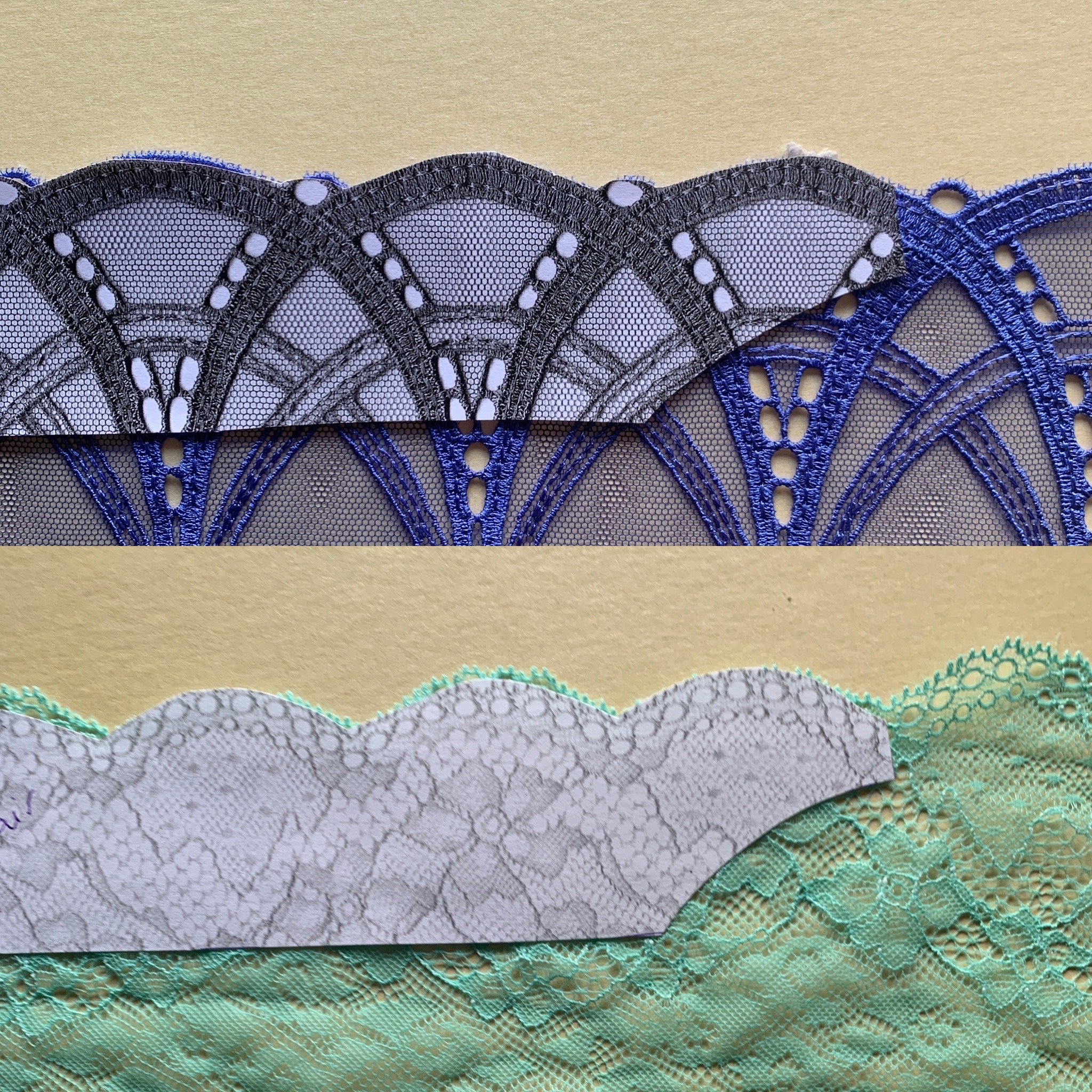Three ways to make a lace pattern for a top cup
Get the lace cut out wrong and your bra (or brief) can look off, I’ve written about galloon lace previously and now we are going to look at what you can do to a pattern to help you cut out this lace.
Two names might you should know before we begin is that the top of the scallop is called the peak and the bottom is called the valley. If you are just starting out then I would recommend a MAXIMUM distance of 1.5cm between the valley and the peak. The greater the distance the harder it is to match the valley and peaks especially when you are sewing a pair of bra cups.
Where to lay the pattern?
You need to have a focal point on the bra cup? This could be at the apex, at the mid point of the bra or at the centre front. I usually have the peak starting from the where the strap is on a soft bra so all bras visually look the same. On an underwire bra I have the valley part of the lace end at the underwire so, the underwire measurements doesn’t increase on some sizes and not on others.
What if there is a seam in the top cup?
If you have a vertical seam in the top cup, you need to match up the lace, it’s easier to match up a valley than a peak (though not impossible). What I do is find the valley then measure 6mm along the lace away from the pattern, and this is where you place the pattern. This is because the seam allowance is 6mm, so by placing the pattern 6mm past the valley once it is sewn you will have two patterns that will look seamless together.
There are three ways to lay your pattern onto the lace all with various degrees of accuracy.
No.1
No.2
Draw the pattern with a straight line and lay the pattern at the base of the scallop (B.O.S) this can be done with the pattern either on top or underneath the fabric
Draw the pattern with a bump and then lay this pattern over the peak so you know where about the lace pattern begins and end.
Photocopy the lace and draw your pattern on this photocopy.
No.3
The benefits of photocopying the lace is whenever you come back to the pattern you know exactly what you are doing, and if the pattern gets graded you have the designs looking exactly the same before you begin. This is helpful if you as a designer are passing the design to a sample machinist.




